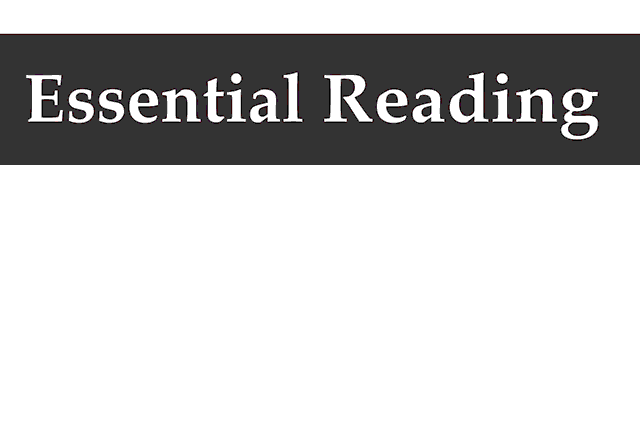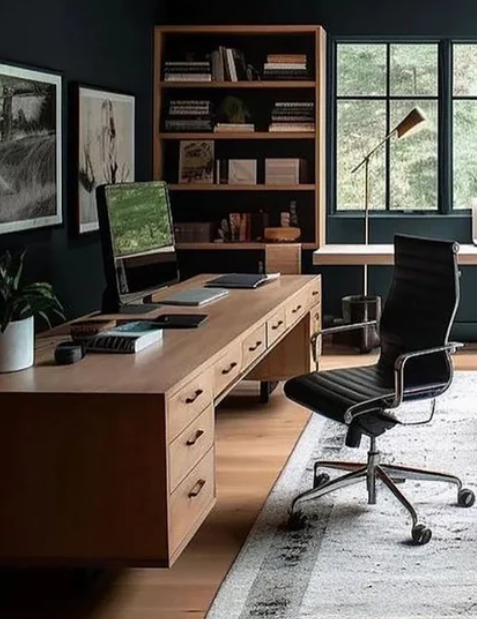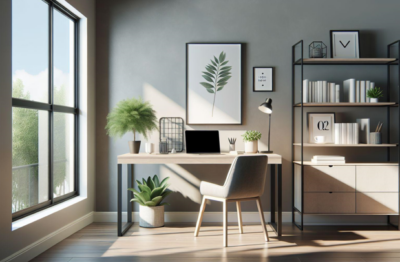June 18th, 2024
BURLINGTON, ON
Remote work has surged in popularity over the past few years, driven by technological advancements and evolving work cultures. The COVID-19 pandemic accelerated this shift, making remote work not just a temporary measure but a long-term trend. Companies and employees alike have recognized the benefits of working from home, from increased productivity to a better work-life balance.
The rise of remote work has also led to a significant change in how people set up their home offices. Gone are the days of makeshift workstations on kitchen tables. Today, employees are investing in creating personalized and functional home office spaces. This trend includes a focus on aesthetics, with many choosing to decorate their workspaces with prints and other art pieces. But why is this shift happening, and what does it mean for our urban environments and personal well-being?
The impact on urban living
The move to remote work is transforming urban living in profound ways. One of the most noticeable changes is in housing demand. With the need to commute reduced or eliminated, many people are choosing to live further away from city centers. Suburban and rural areas have seen a spike in housing demand as remote workers seek more space and a quieter environment.
This shift has economic implications for cities. Urban centers that once thrived on the daily influx of workers are experiencing a decline in foot traffic. This change affects local businesses, public transportation systems, and even real estate markets. Cities are now grappling with how to repurpose vacant office spaces and adapt to a new urban reality.
Urban planning is also evolving in response to these changes. City planners are rethinking the use of urban spaces, focusing on creating more mixed-use developments that combine residential, commercial, and recreational areas. The goal is to make cities more adaptable to the needs of remote workers, who may still want access to urban amenities without the daily commute.
Home office setups: a new focus on aesthetics
As remote work becomes more permanent, employees are paying more attention to their home office setups. A functional and visually appealing workspace can significantly impact productivity and overall job satisfaction. Ergonomics play a crucial role, with many investing in adjustable chairs, standing desks, and other equipment to ensure comfort during long work hours.
Natural lighting is another essential element of a good home office. Studies have shown that exposure to natural light can boost mood, energy levels, and productivity. Therefore, many remote workers are setting up their workspaces near windows or using daylight lamps to mimic natural light.
The psychological benefits of a well-decorated workspace
The psychological impact of a well-decorated home office should not be underestimated. A visually pleasing workspace can enhance mood, reduce stress, and improve overall well-being. This effect is particularly important for remote workers, who spend a significant portion of their day in their home offices.
Research supports the idea that workspace aesthetics can influence mental health. A study published in the Journal of Environmental Psychology found that individuals working in well-decorated environments reported higher levels of job satisfaction and lower levels of stress. The presence of art and personal items in the workspace was linked to positive emotions and a sense of belonging.
Prints and other decorative elements can also serve as sources of inspiration and motivation. For example, a print featuring a favourite quote or an image of a serene landscape can provide a mental break and a moment of relaxation during a busy workday. These small touches can make a big difference in how remote workers feel about their work environment.



















